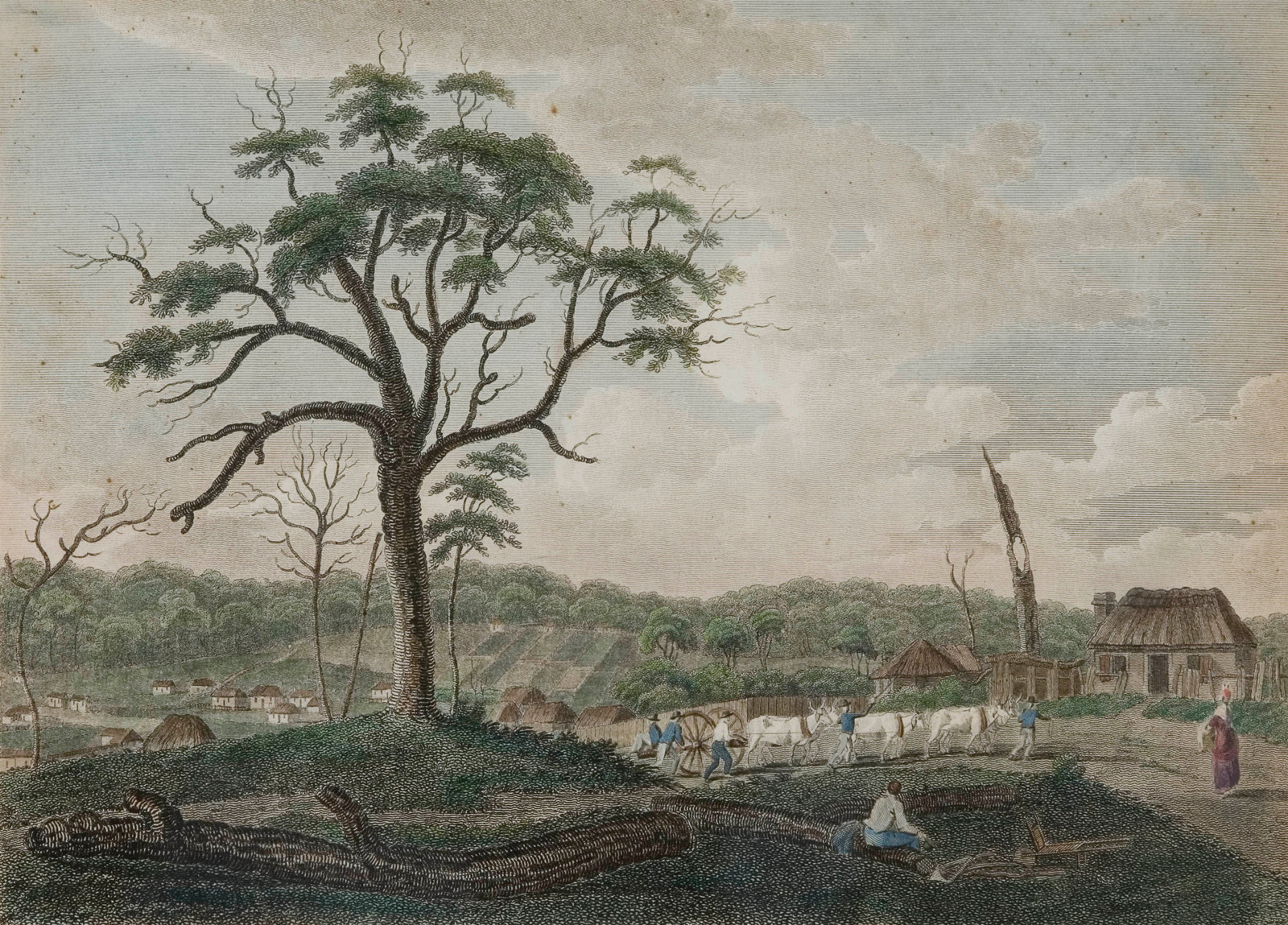The Governor's Domain
The settlement of Sydney was less than a year old when an experimental crop of corn was planted on the banks of a freshwater creek flowing into a little cove to the east called Woccanmagully, soon to be renamed Farm Cove. Unsuitable soils made the harbourside farm unproductive, and within a few years the government’s farming efforts were shifted inland to the newly settled Parramatta area.
Once it was no longer relied upon for food production, Governor Phillip converted this large area of trees, scrub, open grasslands, sandy foreshores and rocky headlands into his private ‘demesne’ or Governor’s Domain. From the early 1790s, a shallow ditch defined the boundary of this picturesque tract which stretched eastwards from the Governor’s mansion, taking in Bennelong Point and Ansons Point (where Mrs Macquarie’s Chair was created a few decades later) across to Walla Mulla (Woolloomooloo) Bay and all the way south to present-day William Street.
Governor’s
Domain
Macquarie's vision
Ian Innes discusses how Macquarie saw the Governor's Domain as a part of the estate of Government House
In coming years, under successive administrations, the governor’s ‘personal’ use of the Domain was whittled away with ad hoc leases and private farming. After 1806, Governor Bligh’s moves to reclaim government lands, including the Domain, from defiant colonists ended in his overthrow with the Rum Rebellion in 1808.
Soon after his arrival in 1809, Governor Macquarie had the Government House gardens and grounds of the Domain enclosed in a continuous stone wall, to restrict access and define the town’s eastern outskirts, which now stretched along the newly laid Macquarie Street. In 1816 Mrs Macquarie’s Road was opened, taking horse-drawn carriages through a sculpted wilderness of introduced plantings, harbour views, paddocks and shady glens (later becoming the Royal Botanic Gardens), terminating at a weathered sandstone outcrop in which a seat was carved for the Governor’s wife to rest and enjoy the scenery.
By 1817, Macquarie’s Domain was completely enclosed; however, unlike his predecessors, Macquarie was happy for townsfolk (of a suitable class) to stroll about and make use of his tasteful improvements, like the Gothic stables and fortifications overlooking the harbour.
Macquarie’s combined interest in picturesque landscapes, town planning and impressive architecture was fully realised in the creation of Macquarie Street, Hyde Park and the Domain precinct. Two centuries later, the Domain, in particular, has retained its original function as land for cultural, government and public use, with Macquarie’s General Hospital, convict barracks and government stables surviving on its western boundaries. Elsewhere were latterly delineated zones such as the new Government House (1843) and developments around St Mary’s church (1821).
In later years, buildings including the Sydney Opera House, Art Gallery of New South Wales, the State Library and Parliament House rose fittingly in the Domain, although expressways and access roads have chipped away at its continuity.
Besides the lofty buildings of government power, art and culture, the Domain has an ongoing role as a ‘people’s place’ – somewhere to play sport, picnic, and attend ceremonies, parades, shows and gala spectacles like ‘balloon ascents’ and royal commemorations. In the 1850s, the first Intercolonial Cricket Match between Victoria and New South Wales was staged in the Domain, and a century later, in 1954, the newly crowned Queen Elizabeth commenced her Australian tour after stepping ashore here.
As Sydney’s well-used ‘backyard’, the Domain has been a site of fiery protest, political debate, and mass entertainment. In times of economic hardship, the trees have shaded sprawling encampments of homeless people. In more prosperous times, crowds of screaming fans have danced and raged before cacophonous rock bands or the more sedate spectacle of a symphony in the park.

Convict Sydney
The Convicts’ Colony
Part one starts in 1788 with Sydney established as a British convict colony on the clan lands of the Gadigal people
Published on